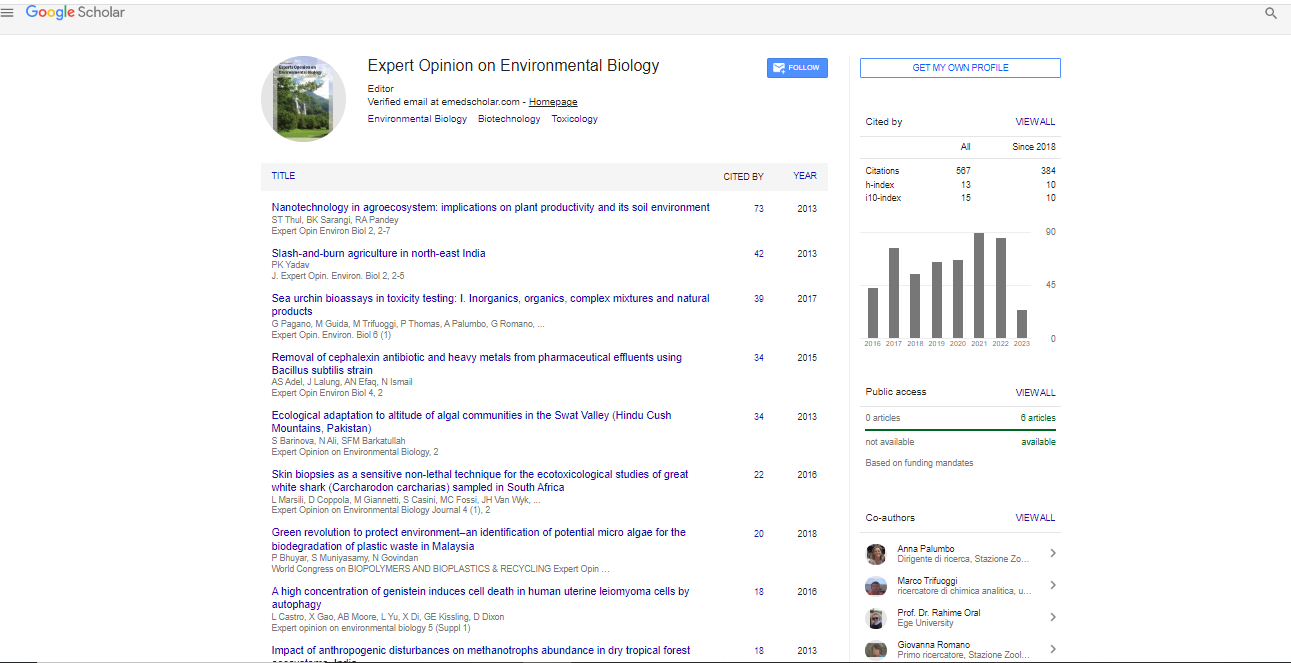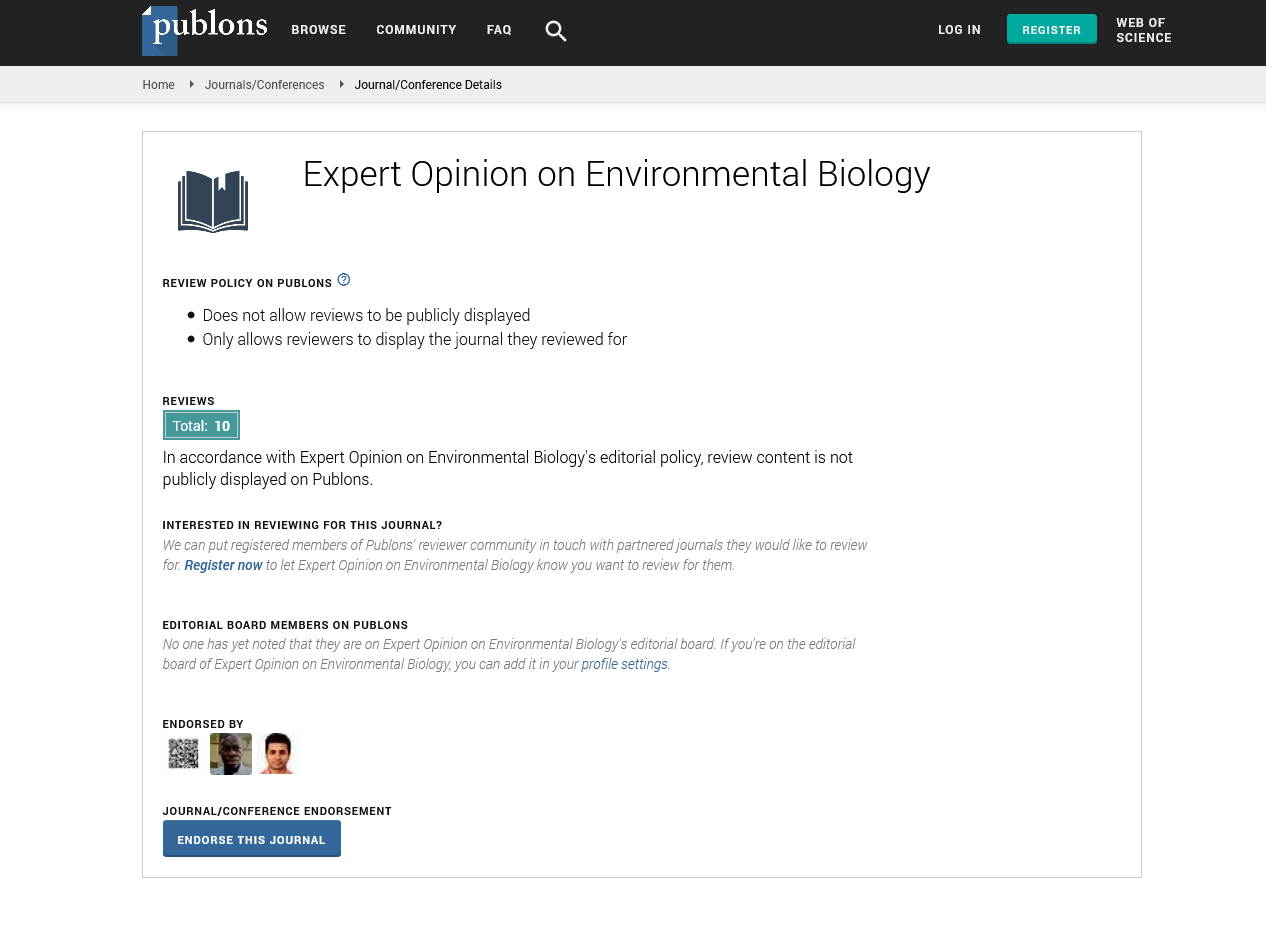Defining quantitative targets for soil organic carbon stocks in Europe
Elisa Bruni
Laboratory of Climate and Environmental Sciences, France
: Expert Opin Environ Biol
Abstract
The Mission Board on Soil Health proposed quantitative targets for European soils to become healthy. Among them, current carbon (C) concentration losses in croplands should be reversed to an increase of 0.1-0.4% per year by 2030. There are different approaches to define quantitative targets and each of them can be used for specific obejctives. To promote the restoration of degrading soils, for instance, policy makers can fix a target that depends only on the initial soil organic carbon (SOC) stock. Instead, increasing SOC stocks relative to a baseline means that the increase rate wil be fixed for all soils. Depending on the objective, different efforts to increase C input will be necessary. Several management practices allow increasing SOC stocks (e.g. cover cropping, improved crop rotations, agroforestry and adding exogenous organic matter (EOM) to the soil). In this study, we selected 11 long-term cropland experiments in France and Sweden to estimate the amount C input that allowed reaching a 0.1% and 0.4% SOC stock increase target. All experiments consisted of a control treatment and one or multiple treatments where additional EOM was added to the soil. From these data, we estimated the relationship between additional C input and SOC stock increase. Then, we quantified the amount of C input required to increase SOC stocks by 0.1% and 0.4% per year: 1) relative to the initial stocks and 2) relative to the baseline. We found that the calculation method used implied significanlty different amounts of C input to reach both quantitative targets.
Biography
Elisa Bruni is pursuing her PhD at the Laboratory of Climate and Environmental Sciences. She mainly focuses on soil organic carbon modelling.
 Spanish
Spanish  Chinese
Chinese  Russian
Russian  German
German  French
French  Japanese
Japanese  Portuguese
Portuguese  Hindi
Hindi 
